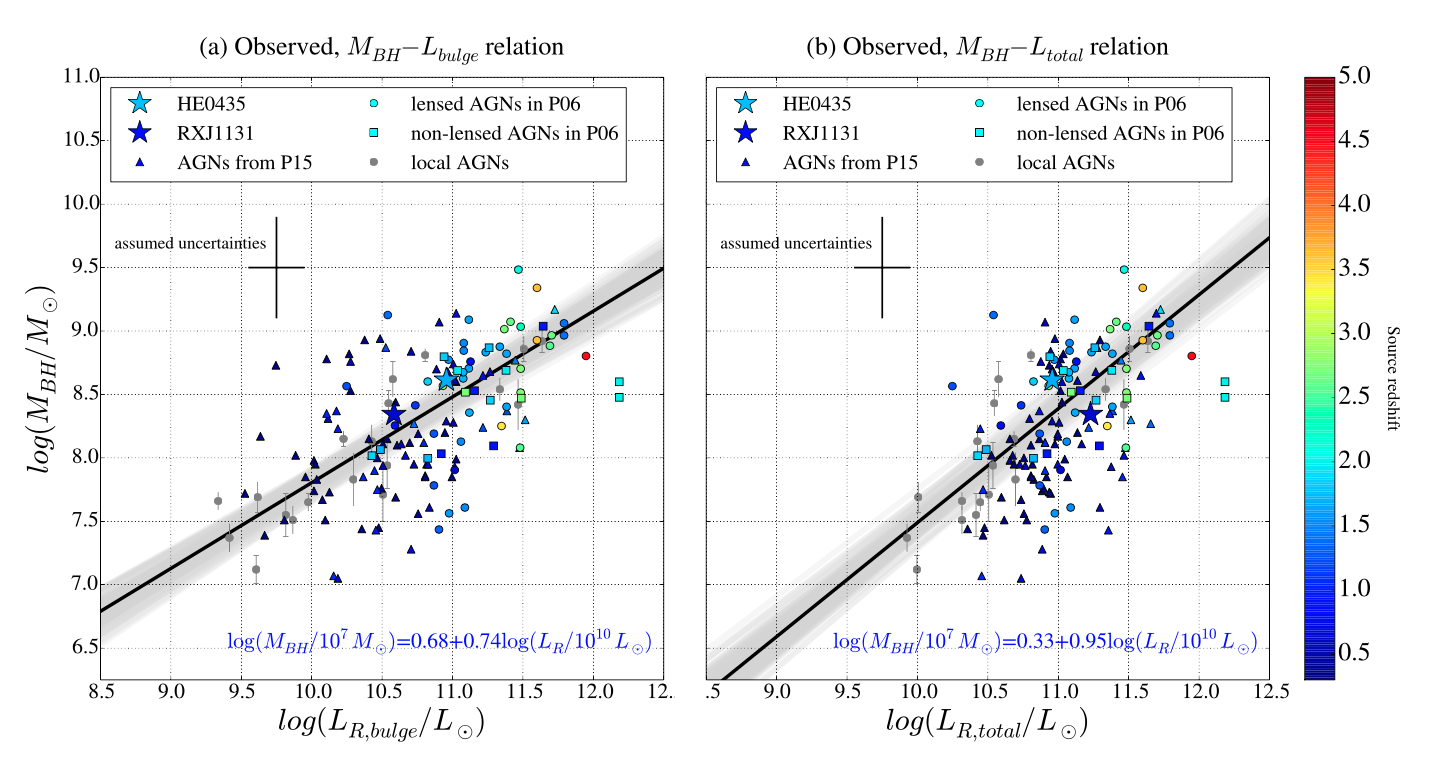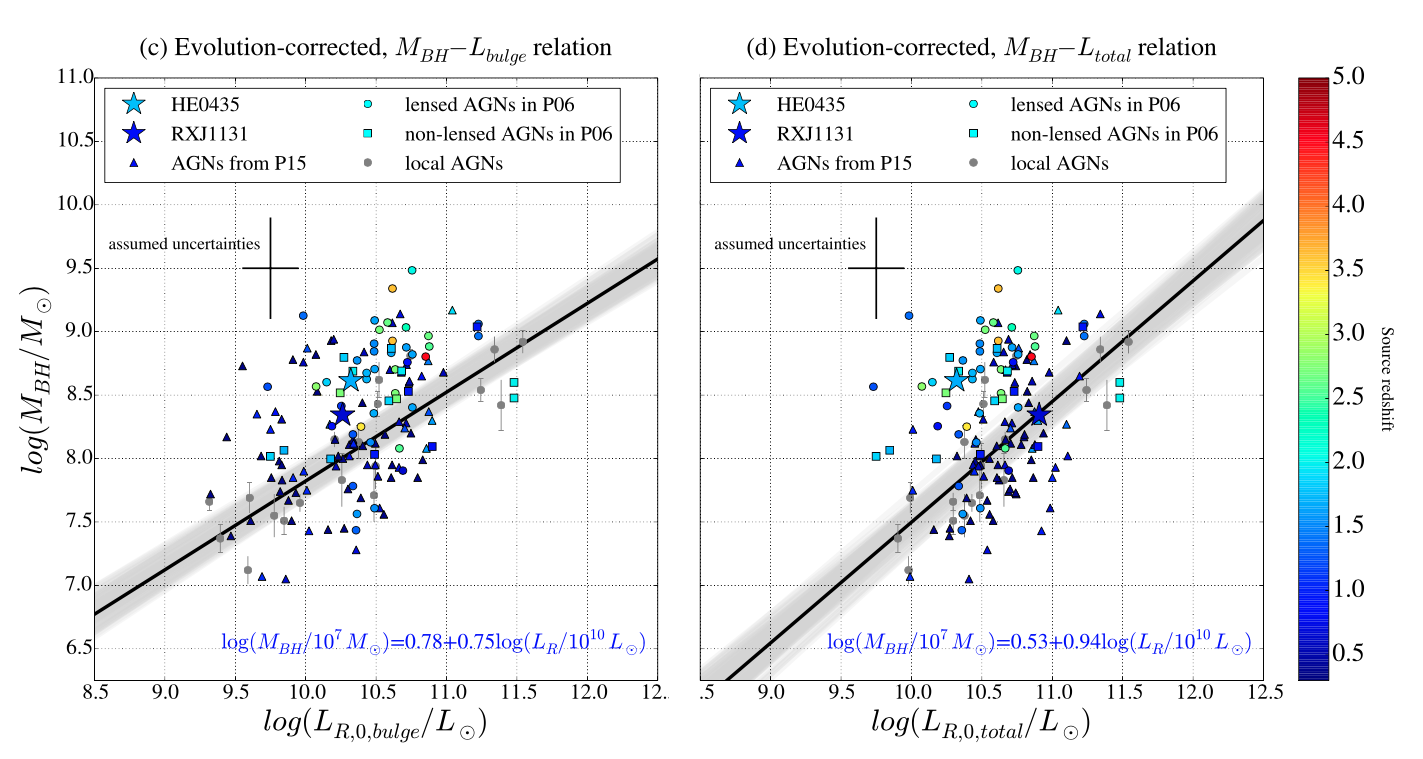H0LiCOW VII. Cosmic evolution of the correlation between black hole mass and host galaxy luminosity.
Strongly lensed active galactic nuclei (AGN) provide a unique opportunity to make
progress in the study of the evolution of the correlation between the mass of supermassive black holes
and their host galaxy luminosity. We demonstrate the power of lensing by analyzing two systems for which
state-of-the-art lens modelling techniques have been applied to deep Hubble Space Telescope imaging
data.
The reconstructed images of HE0435 (obtained by H0LiCOW IV) and RXJ1131
(obtained by Suyu et al., 2013, ApJ, 766, 70) were fitted by GALFIT to infer the total and bulge
luminosity of the host. Our inference of host luminosities are supposed to have better accuracy and
precision than the uncertainty on single epoch MBH estimates (~0.5 dex), as studied by H0LiCOW VI. Also, we used the published broad-line spectroscopy to
estimate the black hole mass using the so-called virial method.
We then combine our new measurements with new calibration of previously published measurements to study the evolution of the correlation out to z~4.5. Consistent with previous work, we find that the observed correlations do not evolve:

Once passive luminosity evolution is taken into account, we find that BHs in the more distant Universe reside in less luminous galaxies than today:

Fitting this offset as the ratio of black hole mass versus host luminosity ~ (1+z)^gamma, and taking
into account selection effects, we obtain gamma = 0.6 ± 0.1 and 0.8 ± 0.1 for the case of MBH-Lbulge and
MBH-Ltotal, respectively. The evolutionary trend is detected at high significance, confirming previous
statistically marginal results.
To test for systematic uncertainties and selection effects we also consider a reduced sample that is
homogeneous in data quality. We find consistent results but with considerably larger uncertainty due to
the more limited sample size and redshift coverage (gamma =0.7 ± 0.4 and 0.2 ± 0.5 for the case of
MBH-Lbulge and MBH-Ltotal, respectively), highlighting the need to gather more high quality data for
high redshift lensed quasar hosts. Our result is consistent with a scenario where the growth of the
black hole predates that of the host galaxy.